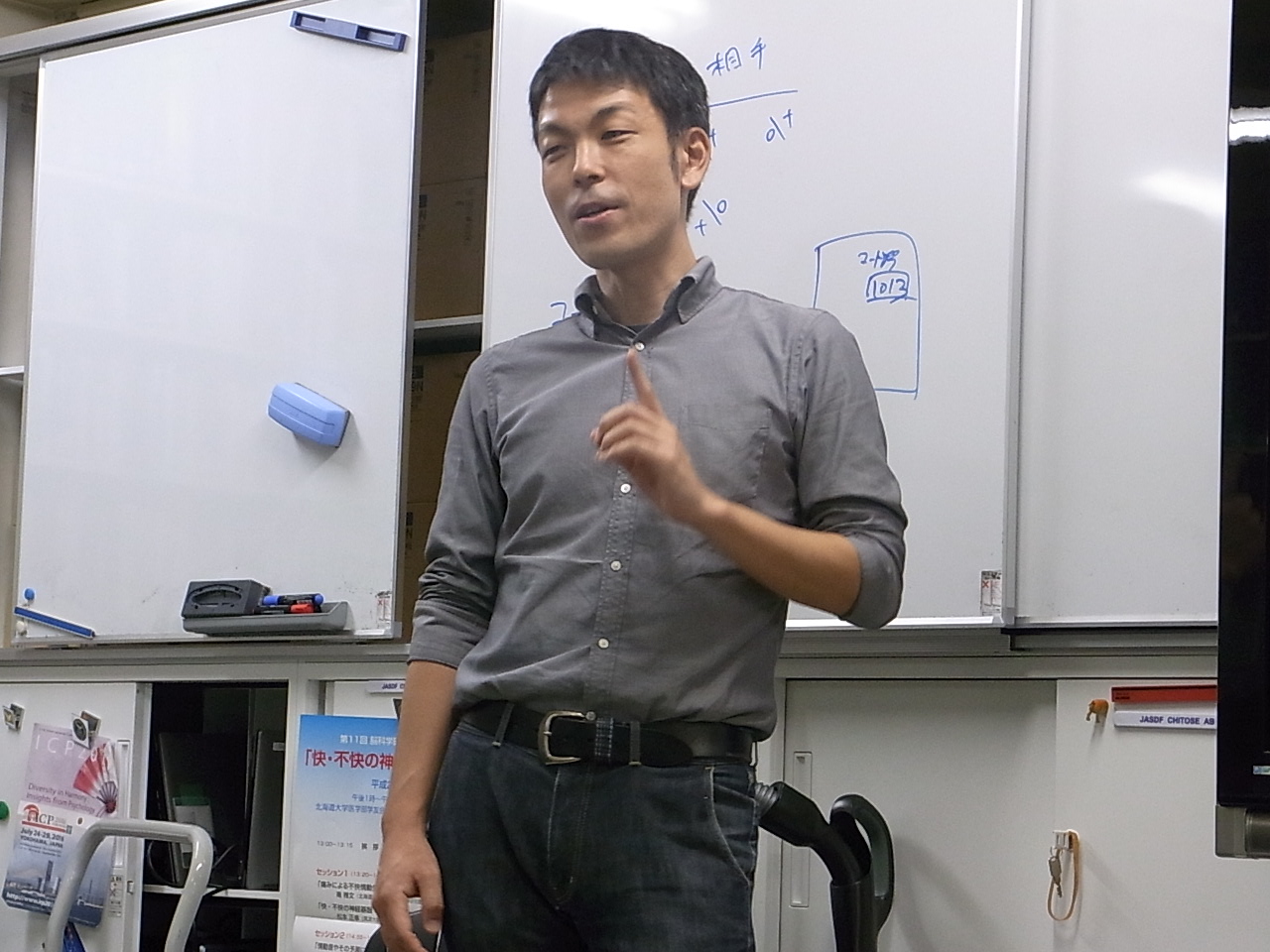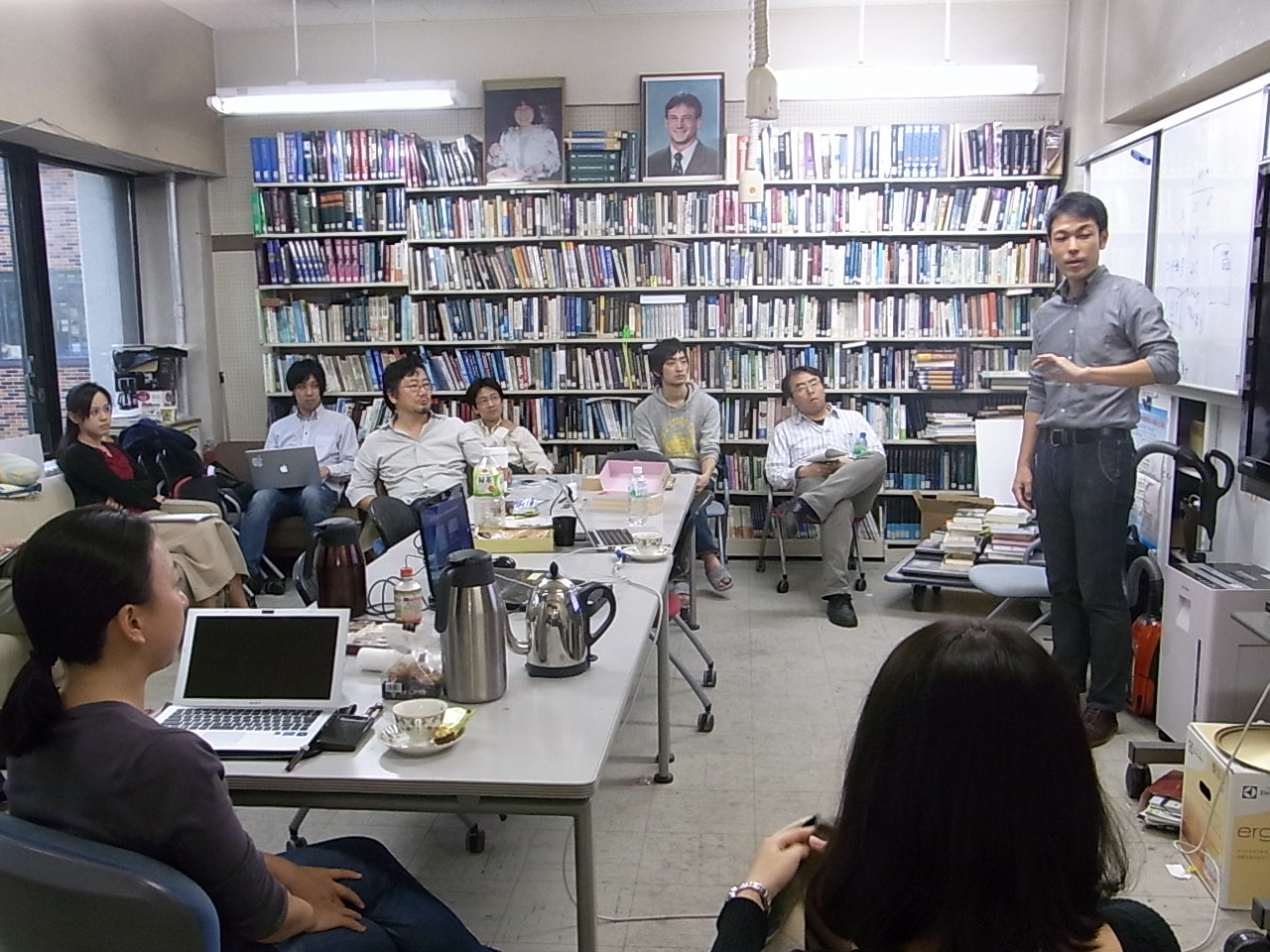The 6th SEFM Young Researcher’s Speaker Series
Note: This workshop was jointly held with the Center for Experimental Research in Social Sciences, Hokkaido University.
Date & Time:2013.10.25 (Fri) 2pm-
Speaker: Dr. Akitoshi Ogawa (Santa Lucia Foundation, Rome, Italy)
Title: Neuroimaging in realistic condition: two different fMRI approaches
Abstract:
Presenting realistic stimuli in an MR scanner to probe cognitive processing in the human brain is gaining increasing interest. At first, I will talk the neural correlates of stock trading. Economic bubbles have repeatedly formed and burst in modern history. As a bubble grows, microeconomic behavior ceases to be constrained by realistic predictions, contradicting the assumption of rational expectations in economics. This fMRI study examined the neural basis of behavior during bubbles while subjects traded shares in a virtual stock exchange. Our result showed that the parietofrontal connectivity was predominant during the bubble, whereas the ventral-dorsal prefrontal connectivity balanced with the parietofrontal connectivity during the non-bubble. These suggest that the price increase under uncertain and unstable market conditions changed brain modes in traders. Second, I will talk our fMRI study using a 3D Surround cinema with stereoscopic viewing system and multi-speakers surround sound system. We used computation-based method based on the extraction of time-varying features of the stimuli as well as standard condition-based design, to investigate the neural correlates of spatial audio-visual signals in free viewing of 3D-Surround cinematography. The blocked presentation served for standard condition-based analyses (i.e. 3D vs. 2D, Surround vs. Mono), while all datasets were submitted to computation-based analyses (i.e. visual disparity, auditory complexity). The results show that computation-based analyses can track the spatial aspects of realistic audio-visual stimuli. Taken together, various methods have become available to investigate brain responses associated with cognitive processing in realistic/naturalistic conditions.

